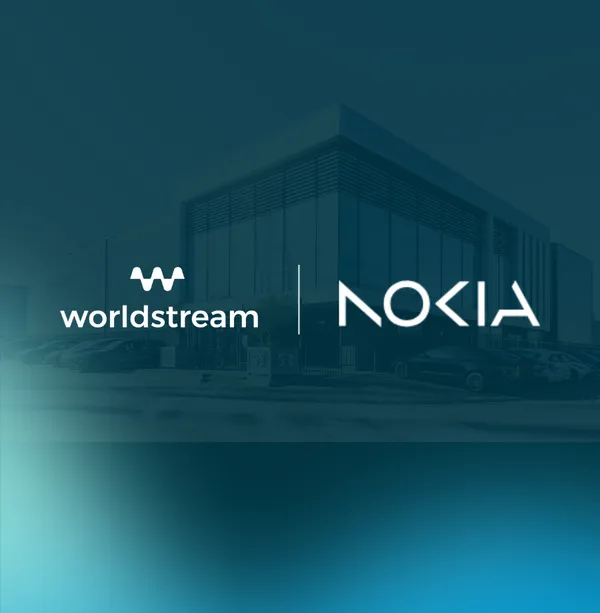7 Business Benefits of Using Public Cloud Infrastructure

Knowledge blog

The ability to achieve maximum performance for an IT infrastructure and total end-to-end control from hardware to the IT applications deployed on it are two key benefits of a dedicated server architecture. However, using public cloud infrastructure can have plenty of benefits as well. In this article, we will elaborate on the various advantages of utilizing public cloud.
How IT Companies Use Public Cloud Infrastructure To Their Advantage
Public cloud infrastructure is a much-requested solution in the market and for good reason. That’s why, in addition to dedicated servers and private cloud infrastructure, under the name WS Cloud, Worldstream has developed high-performing, cost-effective public cloud infrastructure for its customers. But what exactly are the main advantages of using public cloud? In this article, we will elaborate on the unique features of public cloud infrastructure and the opportunities it may offer for organizations.
1. Quick Set Up, Faster Time to Market
Because public cloud infrastructure can be provisioned in a matter of minutes, service providers utilizing infrastructure like Worldstream’s WS Cloud are able to rapidly build solutions that are fully tailored to the specific requirements of their customers. By deploying their applications on public cloud, service providers are enabled to easily create tests and proofs of concept (PoCs) that will add to their innovation capabilities while enabling their customers to use or launch new services more quickly. Public cloud platforms like Worldstream’s WS Cloud can be used to greatly simplify and speed up these innovation processes. Simply put, WS Cloud can be utilized to develop your own services based on our cloud infrastructure. This enables IT providers to provide services to their respective end customers. From MSPs (managed service providers) building their own SaaS products to ecommerce platforms created by ISVs (independent service vendors).
For service providers, being able to quickly develop PoCs can be essential for their business model since it can help them innovate more quickly. The ability to test new products and services and get feedback from early adopters easily and quickly may provide service providers with a competitive advantage. It enables them to finetune their offerings down to the last detail before making them available to a larger audience. By using public cloud infrastructure, this procedure may drastically shorten the time it takes to launch new services, offering service providers a competitive edge in a market that is changing quickly.
A retail business might need to swiftly introduce a new ecommerce platform, for instance, to meet fast growing customer demand. On public cloud infrastructure, a service provider can swiftly develop and deploy such a new ecommerce platform, providing the online retailing client with a quick go-to-market opportunity on this newly developed ecommerce technology. Through the use of public cloud infrastructure and rapidly deployable and modifiable PoCs, the service provider is enabled to focus on the development of this ecommerce technology, while considering the underlying basic infrastructure only as a given that serves the ecommerce solution. Businesses that need to swiftly adjust to shifting market circumstances or client demands may find innovation and development pace supported by public cloud to be of particular importance.
2. Cost Effectiveness
The advantages of using public cloud systems go much beyond being able to facilitate innovation. Moving to a public cloud environment may also have a substantial influence on the cost paradigm of an organization, depending on the nature of the business. With public cloud infrastructure, organizations have the ability to pay for and make use of just the compute, storage, and networking resources that they actually employ.
When using on-premises server systems, organizations are required to make financial investments in the various pieces of hardware equipment as well as the actual data center space required to house the equipment. These expenditures are often based on anticipated demands. If an organization reaches the physical boundaries of its space though, it may find itself paying for more than it requires or being compelled to upgrade after it has achieved capacity. This might lead to infrastructure expenditures that turn out to be not that essential or even a waste of resources. As a service provider or end user, employing dedicated servers may enable you to lower your CAPEX investment and shift it into operating expense-based costs, whilst using public cloud computing may enable you to take a desired OPEX expenditure to the next level.
Because of public cloud infrastructure’s ultimate deployment flexibility, organizations are enabled to avoid spending money on their infrastructure that isn’t essential. Since public cloud platforms including Worldstream’s WS Cloud are based on a pay-as-you-go approach, organizations only need to pay for the compute, storage, and networking resources which they actually employ, fully removing the need of making significant infrastructure expenditures up front. It enables organizations to better control the costs associated with their IT operations. It helps them optimize infrastructural expenses by avoiding overprovisioning of resources while maintaining agility and competitiveness. Especially in markets that are evolving at a fast rate, the ability to get a further grip on infrastructural costs and CAPEX investments while at the same time enhancing an organization’s innovation capabilities can be of utmost importance.
3. High (Global) Scalability
Although the use of dedicated servers brings advantages for a powerful hosting of IT applications, some may find the scalability options of dedicated servers limited compared to the use of public cloud. With dedicated server infrastructure, IT application growth rates, storage capacity requirements, as well as network bandwidth utilization may all be challenging to forecast. The same accounts for maintaining performance when a workload approaches its capacity limits.
One of the main advantages of using public cloud services is the capability to expand fast and accommodate unforeseen rapid workload growth or seasonal swings in infrastructure demand. With public cloud, the number of servers you can deploy is no longer constrained by the physical capacity of a data center server cabinet. The instant scalability options of public cloud are in fact unlimited, even at a global scale.
Sure, dedicated servers certainly do provide many scalability options. The practice of expanding dedicated server infrastructure by adding CPUs, installing additional memory (RAM), or deploying faster drives, allows server administrators to scale vertically so that they don’t need to increase the number of servers for an IT environment. Sizing a dedicated server environment horizontally is an additional method of scaling a dedicated server environment. To expand server infrastructure this way, scaling horizontally entails installing extra servers in a data center cabinet.
Public cloud can more easily be expanded, without spending money on new server equipment or server components and manually setting it up in a data center on-site. If you need more CPU cores, RAM, or storage, the virtual machines provided by public cloud can be easily and instantly deployed. In that case, a public cloud provider like Worldstream houses the data center hardware that supports it while remote access is provided for accessing the compute, storage, and networking resources.
4. Data Storage and Compliance
In addition to quick and easy scalability, public cloud computing also provides quick solutions for deploying extensive storage capacity. Public cloud service providers like Worldstream have the ability to securely store massive amounts of data, thus representing a fitting choice for organizations that require high-capacity storage solutions, such as for those operating in information-intensive industries like healthcare, research, banking/finance, government, manufacturing, and education.
In contrast to creating a physical server storage environment, deploying storage infrastructure in the public cloud doesn’t need a lot of technical expertise from an organization since the infrastructure tends to be managed and maintained by the cloud provider, at least that is the case with Worldstream’s public cloud offering. Even for storage-savvy developers, this can be a great advantage, as they can focus on other tasks where they are able to add more value. In addition, when storage capacity requirements change, the storage infrastructure capacity within a public cloud setup may scale up or down dynamically. The capacity ceilings within a public cloud are usually high enough for the majority of organization workloads.
To fulfill the storage demands of a wide variety of clients and applications, the majority of public cloud providers including Worldstream provide a full spectrum of storage options such as file storage, block storage, as well as object storage. Also, scalable performance levels tend to be provided, as is the case with Worldstream’s WS Cloud, enabling clients to install the ideal fitting storage infrastructure for their applications. Public cloud infrastructure allows users to choose and pay for the level of storage performance they need, and they can even modify the storage tier dynamically to meet short-term increases or drops in those demands.
Since Worldstream is a European public cloud service provider, our public cloud and accompanying storage offerings also benefit clients who want to adhere to strict Dutch, German, and European data storage regulations. This is especially true given that Worldstream’s public cloud infrastructure is housed in identifiable data centers in the Netherlands and Germany that are run by Worldstream itself as well as in joint cooperation with some close partners.
5. Business Continuity
Public cloud infrastructure usually offers a fault-tolerant solution in terms of its underlying architecture. In case any of its components should fail, the virtual machines will switch to using the computing power of other servers. The infrastructure offered by public cloud will therefore continue to operate and all public cloud services will continue to function as before, even in the case of a disruption.
With public cloud infrastructure deployments, whenever there is a change to an organization’s data, this data is also securely replicated across multiple physical servers and server locations. This ensures that there is always a backup copy available, even when a hard disk or server would occasionally fail.
In addition, public cloud infrastructure deployments often have powerful methods for disaster recovery in place. Public cloud infrastructure providers often operate multiple data centers that are distributed across different locations. It means that data can be quickly recovered from a backup copy in another location if necessary, ensuring that organizations can recover from a disaster rapidly and minimize the effect it may have on their business operations.
When addressing the business continuity benefit, the capacity to maintain resilience and swiftly increase resources is yet another significant advantage offered by public cloud infrastructure deployments. During a disaster or another kind of disruption, organizations may experience a sudden, unanticipated increase in demand for their services. It might be the result of increased demand for remote work enablement solutions or real-time analytics capabilities. Deployments of infrastructure in the public cloud make it possible for organizations to rapidly increase their available resources to satisfy this demand. This ensures that organizations can safeguard business continuity and maintain the continuity of their services for the benefit of their customers.
6. Easy Infrastructure Management
Another key benefit of public cloud platforms like Worldstream’s WS Cloud is the fact that infrastructure management is included as part of the service. This implies that organizations can concentrate on developing, deploying, and managing their IT applications and managing their data since a public cloud service provider such as Worldstream will take care of tasks like patching, updates, and monitoring. Smaller organizations, who may not have the means to handle their infrastructure internally, might benefit significantly from this but it can also benefit large organizations as well as companies that prefer to use their engineering capabilities for what they can actually differentiate themselves with, on top of the public cloud on which they develop their applications.
The administrative needs for applications are significantly reduced when they are hosted in the public cloud. Previously, with more traditional infrastructural options, there were several tasks that needed to be completed when deploying new IT applications. Infrastructural management software was required as well as a suitable quantity of licenses. One also needed to purchase or rent the necessary server and networking hardware to host it and address any data migration or security concerns that may arise. It was a significant endeavor that, in many instances, would need to be done on a regular basis to meet the demands of software upgrades.
In addition, IT applications hosted on public cloud infrastructure can be managed relatively easily. Most public cloud providers including Worldstream offer web-based management interfaces or APIs that let customers quickly create and customize their IT applications housed in the cloud. Users no longer need to conduct challenging IT operations to spin up additional instances for an IT application or amend performance parameters. Public cloud providers also tend to assist users in monitoring and enhancing the performance of their public cloud-hosted IT applications. These solutions may provide functions like load balancing, automated scaling, and performance analytics to make sure an IT application is operating well.
7. Available Security Tools
The availability of flexible, scalable, and cost-effective computer resources via the use of public cloud infrastructure has fundamentally altered the manner in which organizations function. On the other hand, security concerns may grow when moving workloads to the cloud. Public cloud providers including Worldstream have realized this, and as a result, they have implemented a wide variety of cutting-edge security measures to safeguard IT application deployments and data of its users.
For instance, one of the most important security tools offered by the majority of public cloud service providers including Worldstream is an integrated firewall. Monitoring and filtering incoming and outgoing network traffic based on specified security rules is the primary function of firewalls, which contribute to the overall security of the public cloud environment. This guarantees that only the network traffic that has been authorized to enter and leave the public cloud environment is permitted to do so.
VPN capability is often provided by public cloud service providers as an additional security feature. Virtual Private Networks, known as VPNs, are used to establish a secure connection between the devices used by an organization and the public cloud environment. This protects the data during transmission from the user’s device to the public cloud environment, ensuring that it cannot be accessed by malicious actors or stolen by accident.
Another measure taken by public cloud infrastructure providers including Worldstream to safeguard their customers’ data is the creation of private subnets. Private subnets are completely separated from the public internet, and only users with the appropriate permissions are permitted to access them. Because of this, sensitive client data cannot be accessed by unauthorized parties.
A public cloud provider’s usage of snapshots and backups are yet also important components of an overall security strategy for public cloud. Snapshots are copies of a cloud environment that are taken at a certain moment in time, while backups are complete copies of the cloud environment. In case that there is a breach of security or any loss of data, both these solutions make it possible to easily restore an organization’s data in a quick manner.
To sum up, public cloud infrastructure makes a wide variety of security features accessible to its users, some examples of which include built-in firewalls, VPN capability, private subnets, snapshots, and backups. With the assistance of these cutting-edge security technologies, organizations that shift their workloads to the public cloud may have peace of mind knowing that their business data is protected at all times.
A Comparison: Public Cloud vs. Private Cloud
Both public cloud and private cloud infrastructure allow organizations of all sizes to get dynamic access to the compute, storage, and networking resources they need to deploy, distribute, and manage their IT applications and services. However, there are a few crucial things to take into account when selecting the best cloud environment and accompanying capabilities for an organization. As Worldstream is offering both private and public cloud infrastructure, let us touch on the main distinctions between public and private clouds, with their benefits and drawbacks counterbalanced.
Public cloud infrastructure offers a certain benefit in terms of scalability. Organizations that utilize the public cloud may quickly scale their workloads up or down depending on their business requirements since they have access to nearly endless cloud computing resources on demand. The infrastructure for private cloud computing must be more carefully planned and funded in order to keep up with an organization’s changing demands.
Sure, the reliability and performance of private cloud infrastructure are some of its key benefits. Additionally, private cloud infrastructure usually provides customization choices in contrast to the shared, fixed capabilities of public cloud, which can be advantageous for organizations with truly unique demands or regulatory constraints. Then again, private cloud typically has a higher upfront investment as well as a longer time-to-market, while public cloud can be deployed immediately and dynamically, benefiting CAPEX levels and flexibility.
The ability to concentrate on key business goals rather than spending time and money on IT administration and maintenance is another benefit of utilizing public cloud infrastructure. Public cloud providers like Worldstream handle all maintenance and upkeep, freeing businesses to concentrate on their clients and corporate objectives.
To sum up, while private cloud infrastructure gives more control, privacy, and customization choices, public cloud infrastructure offers cost savings and scalability. Which cloud environment is selected will ultimately rely on the unique requirements and business objectives of an organization.
Closing arguments for public cloud
Public cloud infrastructure provides service providers with a competitive edge by allowing them to quickly develop PoCs and test new products and services, providing them with a competitive edge in a fast-changing market. Public cloud infrastructure also provides organizations with a cost-effective infrastructure solution to host their IT applications by allowing them to pay for and make use of just the compute, storage, and networking resources they employ.
In addition, public cloud infrastructure enables organizations to better control costs and optimize infrastructural expenses, while also providing high (global) scalability options to accommodate unforeseen rapid workload growth or seasonal swings in infrastructure demand. Public cloud computing provides quick and easy scalability, secure storage capacity, and scalable performance levels for organizations that require high-capacity storage solutions. It also allows users to choose and pay for the level of storage performance they need.
Worldstream’s public cloud infrastructure, WS Cloud, offers its clients all these benefits, also including business continuity, disaster recovery, and easy infrastructure management, allowing organizations to maintain resilience and quickly increase resources during an unforeseen disruption.
Public cloud platforms like WS Cloud OpenStack-based platform offer infrastructure management as part of the service, allowing service providers like systems integrators (SIs), managed service providers (MSPs), and independent software vendor (ISVs) as well as end businesses to focus on developing, deploying, and managing their IT applications.
Additionally, IT applications hosted on public cloud infrastructure can be managed easily with web-based management interfaces and security tools. Public cloud infrastructure providers including Worldstream tend to offer a variety of security features, such as integrated firewalls, VPN capability, private subnets, snapshots, and backups, to ensure customer data is protected.
In comparison, private cloud infrastructure offers more control, privacy, and customization choices, while public cloud infrastructure offers enhanced cost savings and scalability. Which cloud environment is selected will depend on an organization’s unique requirements and business goals.
About Worldstream’s Public Cloud Offering
Public cloud infrastructure delivered by Worldstream is named WS Cloud. This OpenStack-based high performing, cost effective public cloud offering does not have the disadvantage of upfront private cloud investments and turnaround time. Instantly and dynamically adding ample IT infrastructure deployment and management features including compute and storage resources, security, and networking. Using Virtuozzo’s Hybrid Infrastructure technology, the platform boasts numerous functionalities suitable for MSPs, ISVs, SIs and SMBs. These include easy-to-use built-in VPN, firewall, and load balancing management tools.
To learn more about Worldstream’s public cloud offering, WS Cloud, go here. To learn more about our private cloud offering instead, visit the landing page here.
You might also like:
- How to deliver any IT functionality As-a-Service.
- The difference between Bare Metal Cloud and Dedicated Servers.
- What are your options against a growing number of DDoS attacks?
Have a question for the editor of this article? You can reach us here.

Latest blogs
The Ultimate Gaming Latency Guide: How to Eliminate Lag and Maximize FPS
Knowledge blog

Growing smarter with less maintenance

Knowledge blog

Worldstream and Nokia Join Forces for Next-Gen DDoS Protection

News

Worldstream unveils new positioning and offers customers more control over their digital infrastructure

News

5th Gen AMD EPYC 9355P – Now Live at Worldstream

News

Nokia strengthens Worldstream’s hosting security with advanced DDoS Protection in the Netherlands.

News
